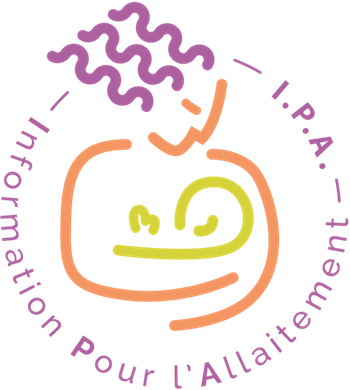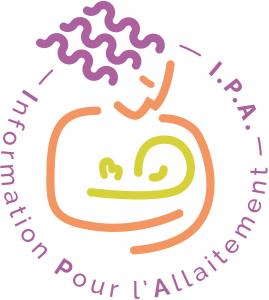Catégories
Documents disponibles dans cette catégorie (39)
 Ajouter le résultat dans votre panier Faire une suggestion Affiner la recherche
Ajouter le résultat dans votre panier Faire une suggestion Affiner la rechercheArticle : texte imprimé
Linda L. Friend, Auteur ; Maryanne T. Perrin, Auteur |Background: The impact of milk banking processes on macronutrient variability in donor human milk (DHM) is largely unknown. Objective: To gain a better understanding of fat and protein composition in DHM and assess potential relationships wit[...]Article : texte imprimé
Laurence Mangel, Auteur ; Amit Ovental, Auteur ; Neta Batscha, Auteur |Objective: This study aimed to evaluate the effect of milk expression method (manual expression versus electric pump) on the composition of breastmilk. Study Design: Data on 21 mothers of 21 newborns 48–72 hours postdelivery were collected an[...]Article : texte imprimé
Brian D.W. Chow, Auteur ; Juliann L. Reardon, Auteur ; Emily O. Perry, Auteur |Background: Colonization increases risk for invasive candidiasis in neonates. Breast milk host defense proteins may affect yeast colonization of infants. Objective: This study aimed to evaluate breast milk host defense proteins relative to [...]Article : texte imprimé
Rebecca Hoban, Auteur ; Aloka L. Patel, Auteur ; Clarisa Medina Poeliniz, Auteur |Objective: Mothers of premature infants confront barriers to coming to volume (CTV; ≥500 mL/day mother's own milk [MOM] by postpartum day 14), a strong predictor of continued MOM provision at neonatal intensive care unit (NICU) disch[...]Article : texte imprimé
Thaneswari Juvarajah, Auteur ; Wan Izlina Wan-Ibrahim, Auteur ; Ali Ashrafzadeh, Auteur |Background: Bioactive proteins from milk fat globule membrane (MFGM) play extensive roles in cellular processes and defense mechanisms in infants. The aims of this study were to identify differences in protein compositions in human and caprine M[...]Article : texte imprimé
Bo Liu, Auteur ; David S. Newburg, Auteur |Breastfeeding protects the neonate against pathogen infection. Major mechanisms of protection include human milk glycoconjugates functioning as soluble receptor mimetics that inhibit pathogen binding to the mucosal cell surface, prebiotic stimul[...]Article : texte imprimé
Lars Bode, Auteur |Human milk oligosaccharides (HMOs) are a family of structurally diverse, complex sugars abundant in breast milk.1 HMO concentrations in human milk often exceed the concentration of all human milk proteins combined (Table 1). HMO profiles can var[...]Article : texte imprimé
This month's issue of Breastfeeding Medicine highlights a seemingly “minor” finding of lowered protein and fat content in the colostrum milk of Syrian refugee mothers as compared with the content of the colostrum of the local Turkish mothers. As[...]Article : texte imprimé
Elisabeth Stoltz Sjöström, Auteur ; Inger Öhman, Auteur ; Andreas Tornevi, Auteur |Background: Human milk (HM) is the preferred basis of nutrition for infants, including those born prematurely. Information on HM macronutrient content is necessary to optimize nutritional support of preterm infants. Objectives: This study a[...]Article : texte imprimé
Michael A. Pitino, Auteur ; Debbie Stone, Auteur ; Deborah L. O'Connor, Auteur |Background: Infant refusal to feed previously frozen human milk is thought possibly attributable to lipase, an enzyme that cleaves fatty acids from milk triglycerides potentially changing the taste of the milk. Previous reports suggest that this[...]Article : texte imprimé
Mojtaba Keikha, Auteur ; Maryam Bahreynian, Auteur ; Mohammad Saleki, Auteur |Background: This study aims at systematically reviewing the observational and interventional studies on the association of maternal macro- and micronutrient intake with breast milk content. Methods: We systematically searched the Medline via [...]Article : texte imprimé
Article : texte imprimé
Magdalena Orczyk-Pawilowicz, Auteur ; Marta Berghausen-Mazur, Auteur ; Lidia Hirnle, Auteur |Background: Human milk provides a multitude of glycoproteins, including highly glycosylated α-1-acid glycoprotein (AGP), which elicits anti-inflammatory and immunomodulatory properties. The milk AGP glycoforms may provide the breastfed infa[...]Article : texte imprimé
Maryanne Tigchelaar Perrin, Auteur ; Erica Wilson, Auteur ; Ellen Chetwynd, Auteur |Background: Our understanding of the components of human puerperal milk is extensive and increasing, yet the literature on nonpuerperal human milk has been limited to studies that measure the success of induced lactation. Objective: This st[...]Article : texte imprimé
Lisa M. Stellwagen, Auteur ; Yvonne E. Vaucher, Auteur ; Christina S. Chan, Auteur |Objective: We hypothesized that pooling a mother's expressed breastmilk for 24 hours compared with individual pump session collection of milk would provide a more consistent caloric product without increasing bacterial contamination. Study De[...]




















